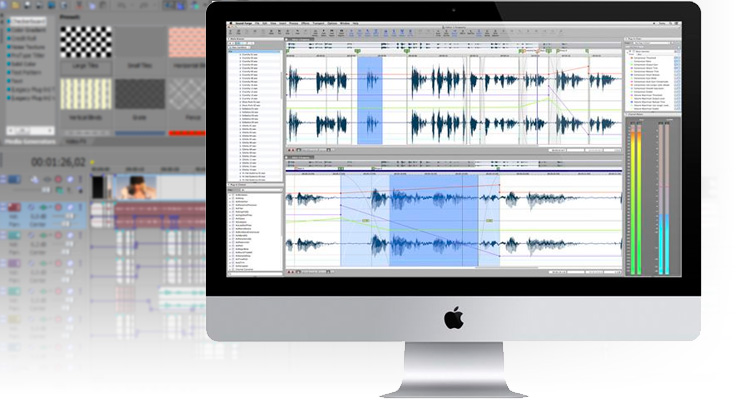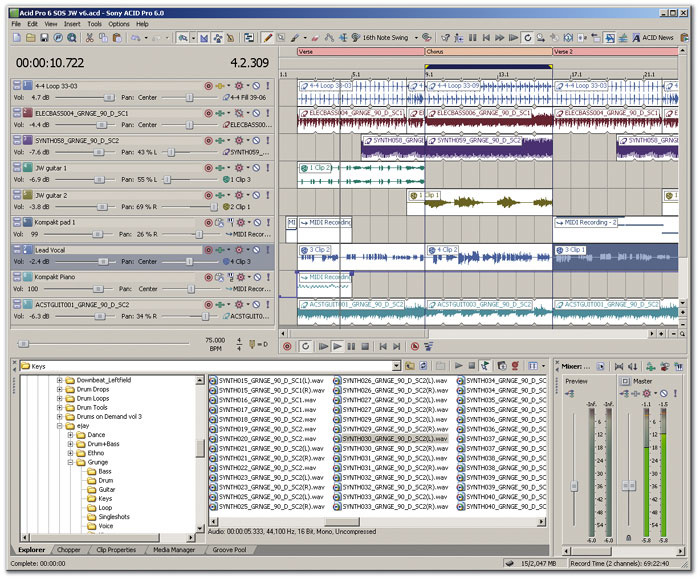

For example, if you set your buffer size to 2000 ms and set ACID software to flush 500 buffers, you’ll create a 1000 second hang on every stop, seek, or render. Excessively high values can cause latency that can appear as an application crash. This should rarely need to be modified.īoth of these settings apply to playback, seeking, and rendering. Entering a value in the FlushOnStopCount DWORD allows you to flush up to 500 buffers of audio.įrame size defaults to 6 ms, but can be set as high as 2000 ms.
#Acid pro full
Some VST instruments (such as FruityLoops) do not flush their buffers on close and will output these buffers the next time you play or render your project. ACID Pro 7 software is a digital-audio workstation (DAW) powerhouse that combines full multitrack recording and mixing, MIDI sequencing, and legendary ACID.
#Acid pro how to
If you’re uncertain how to change these settings, please use the defaults.īrowse to the key.

Incorrectly modifying the registry can degrade performance or cause serious problems with your operating system. These settings will vary with your specific configuration and can be modified via the Windows Registry. Higher sample rates (and bit depths) may require a larger buffer because more data is being put through your device per buffer.Īdjusting these settings can resolve issues with some specific VSTi plug-ins. If you hear glitches, you may need to raise the setting. This is where ease of use goes hand-in-hand with professional results, where ACID loops unleash your creativity, and where hi-end instruments and effects add layers of sophistication. If playback is glitch free, you can try decreasing the setting. ACID Pro is where creativity meets inspiration, a DAW designed for every producer to realize their music making ambitions.

As a last resort, choose Time Critical from the Priority drop-down list.įor ASIO devices, start with a setting of 2048 samples. You can also try increasing the Audio buffers setting to increase the number of buffers created. Use the Buffer size drop-down list to choose a buffer size in samples, or choose MME to use the Playback buffering setting on the Audio Device tab in the Preferences dialog. The trick is finding the sweet spot for your hardware.įor more information about setting advanced audio preferences, click here.įrom the Options menu, choose Preferences, and then click the Audio Device tab.Ĭlick the Advanced button to display the Advanced Audio Configuration dialog for your sound card.Īdjust your buffer size until playback is responsive and clear.įor wave devices, try raising and lowering from the default settings until you find the sweet spot. Getting your computer to play back a complex project can be a bit like walking a tightrope: there’s a delicate balance between responsive playback and glitch-free playback.


 0 kommentar(er)
0 kommentar(er)
